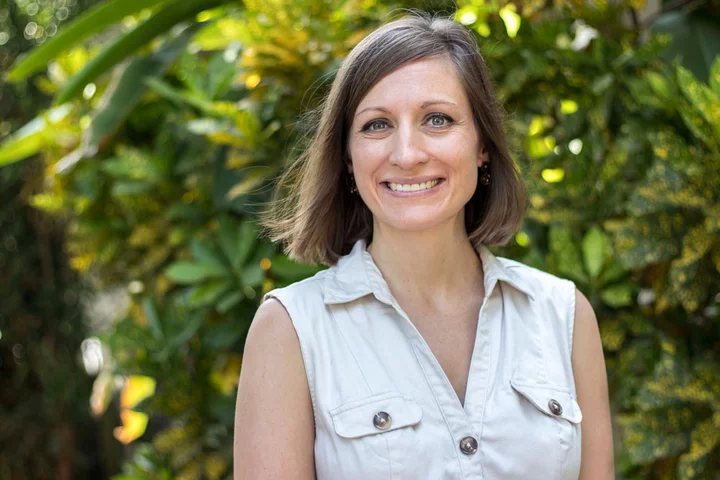One year ago today, I woke up to the news that Marc Mitchell, D-tree’s founder and digital health pioneer, had died suddenly and unexpectedly while hiking in Alaska. This news sent a shock wave through D-tree and the broader digital health community and we have been mourning Marc’s passing ever since. As many in the field know, Marc – a pediatrician by training – was a fearless and uncompromising voice in the fight for better healthcare for all. Marc dedicated his life to the bold task of transforming the way that healthcare was delivered, believing that everyone – no matter who they are or where they live – has a right to high quality healthcare. He held a strong conviction that mobile technology was a critical part of that transformation and spent 15 years at the helm of D-tree generating evidence for how digital technology could improve healthcare delivery and starkly challenging the status quo, from within local communities to national Ministries of Health to global bodies such as the World Health Organization. Marc believed that we could – and had an obligation to – do better, and was determined to show that digital technology had a significant role to play.
Today at D-tree, we carry on Marc’s vision, guided by our north star to work to ensure that everyone has access to high quality health care. At the same time, the field of digital health is rapidly changing. So the way we execute on that vision is also changing. Our work, along with the field of digital health, is becoming more complex, more inter-disciplinary, and also more promising. When I began working with D-tree six years ago, most of the field was focused on pilot projects to prove that health could be improved through the use of mobile technology. Now, we (and a number of other organizations globally) are supporting national roll-outs of digital health programs owned and led by governments. The interest in digital health has grown exponentially and has become a common and essential part of national health strategies.
For us, when we think of digital health, technology is only part of the equation. It’s critical to build world-class software that is adapted to local contexts and can succeed in challenging environments. But it is equally important that we support the adoption and institutionalization of such technology solutions if they will have potential to be sustained and lead to real improvements in people’s lives. This is not an easy task. To date, most well-intentioned digital health programs fail to become incorporated into broader health systems. There is an intensive focus on building technology, with less focus and fewer resources dedicated to the systems changes that need to take place for that technology to effectively be used within a health system to lead to long-term improvements in health, policy and planning.
At D-tree, we work at the intersection between technology and health. We work to bridge the divide that often exists between a technology solution and the on-the-ground realities in low-income countries that need to be considered for that technology to work. Many organizations focus on one aspect of the continuum of digital health – developing a technology platform, creating requirements for a project, supporting implementation of a solution. We believe that this approach, with siloed partners supporting various pieces of a digital health program, does not work. Without an end-to-end partner that can help to accompany a digital health system from conception all the way through integration with national health systems, most programs fail to reach their potential. We believe that this partnership and accompaniment approach is necessary, especially as programs grow in complexity and scale.
At D-tree, we work at the intersection between technology and health. We work to bridge the divide that often exists between a technology solution and the on-the-ground realities.
What we know is that there are no easy or quick fixes. Like so much in the field of development and health, there is no silver bullet to integrating digital technology into health systems. Instead, we are beginning to generate evidence around effective partnerships and models that can and do work – given the right mix of government ownership, partner support and funders who see the value in these systems and are willing to commit to them over a period of years while the introduction, adoption and institutionalization processes are happening. At D-tree, we don’t have all the answers, but we are committed to being part of the dialogue to figure it out. We work through direct implementation with governments, technology companies, researchers and health implementers to gain first-hand understanding of what is needed to effect systems change through technology. And we work at the global level – through dialogue with others working on similar issues, policy-makers and thought leaders – to add to the global conversation and move the field forward as we continue to learn.
In this blog series, we will be exploring various facets of digital health to examine the many dimensions of the field, identify challenges and opportunities, and contribute our learnings to a broader conversation about making digital health succeed. Topics over the coming weeks include:
-
Employing a health systems strengthening approach to expedite change
-
Embracing collaboration to achieve sustainable health system transformation
-
Improving health system resilience: the role of digital health in the wake of COVID-19
We welcome feedback, discussion and comments to these posts as a way to spur conversation and hear perspectives of various groups working towards a similar vision.
This blog series is dedicated to Dr. Marc Mitchell, D-tree’s founder and advocate for the potential of digital technology to bring about transformational change in the world.

